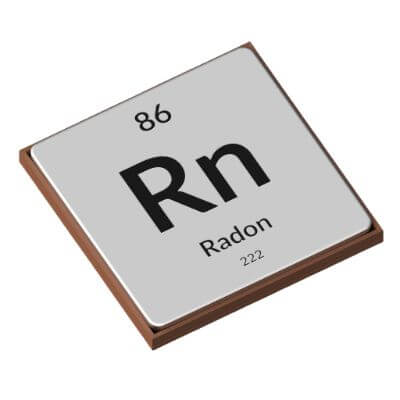
- Name: Radon
- Symbol: Rn
- Atomic Number: 86
- Atomic Weight: 222 u
- Period: 6
- Group: 18 (noble gases)
23 Radon Facts for Kids
- Radon is a chemical element on the periodic table.
- Radon is a radioactive noble gas that is odorless, tasteless and colorless.
- Radon was discovered in 1889 by New Zealand-born British physicist Ernest Rutherford and U.S. electrical engineer Robert B. Owens at McGill University in Montreal, Canada.
- Radon was first isolated in 1909 by Scottish chemist William Ramsay and English chemist Robert Whytlaw-Gray.
- Radon was the 5th radioactive element to be discovered on the periodic table.
- The symbol for radon is Rn.
- The atomic number for radon is 86.
- The standard atomic weight of radon is 222 u.
- Radon us a gas at room temperature.
- Radon is in the noble gas element category on the periodic table.
- Radon is a period 6 chemical element, which is the sixth row on the periodic table.
- Radon is a group 18 chemical element, which is the noble gases group.
- Radon is the heaviest noble gas on the periodic table.
- Radon is in the p-block on the periodic table.
- The electron configuration for radon is [Xe] 4f14 5d10 6s2 6p6.
- The electrons per shell for radon are 2, 8, 18, 32, 18, 8.
- Radon has no stable isotopes.
- The main isotopes of radon are 210Rn, 211Rn, 222Rn and 224Rn.
- The melting point of radon is -96 °F (-71 °C).
- The boiling point of radon is -79.1 °F (61.7 °C).
- Radon is the leading cause of lung cancer in non-smokers and the second leading cause of all lung cancer cases.
- Homes and businesses can be tested for radon and if elevated levels are detected radon migration systems and/or other methods can be used to decrease the levels of radon.
- There are four types of radon mitigation systems and they are active suction, passive suction, pressure system and sub-membrane. Research each one if you’re considering a radon mitigation system, they vary in cost and certain ones need to be put into your home during construction.
Additional Resources on Radon
- Radon (Rn) – Discover more about the chemical element radon on the Los Alamos National Laboratory website.
- Radon for Kids – Find more information about the chemical element radon for kids on the Britannica Kids website.
- Radon and Your Health – Learn about the benefits and/or risks of radon to your health on the National Institute of Health website.
- Radon – PubChem – Read more about radon and the data behind it on the NIH PubChem website.
